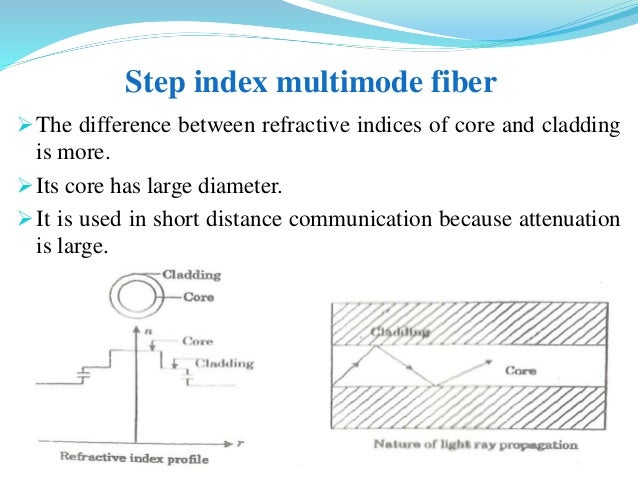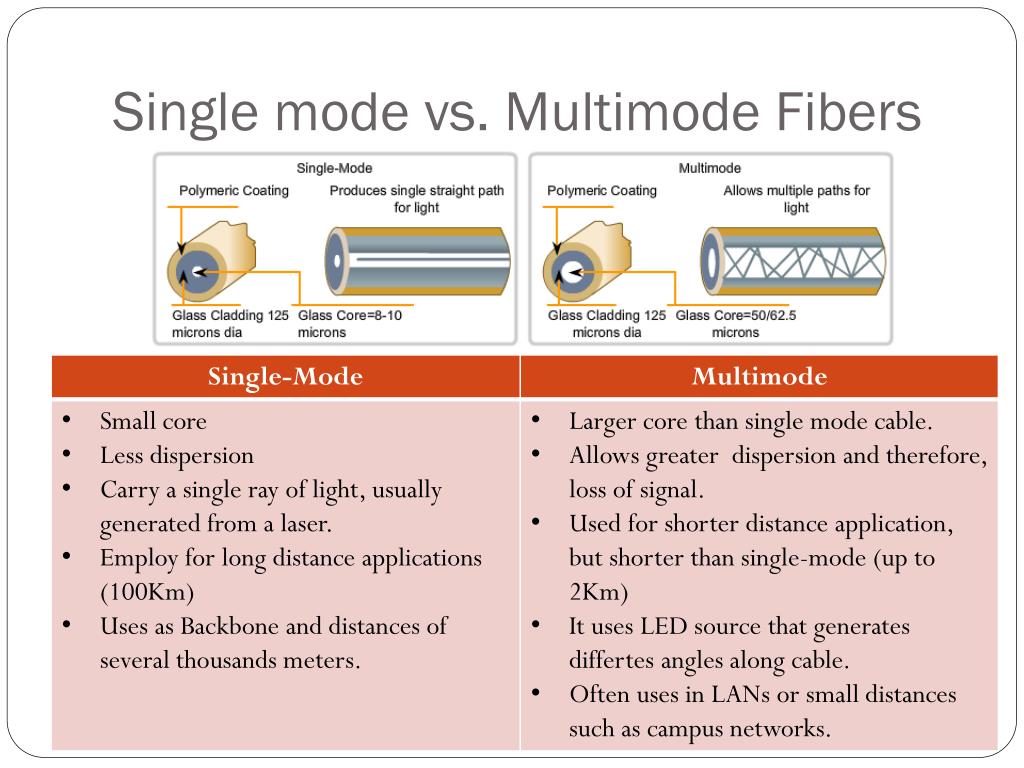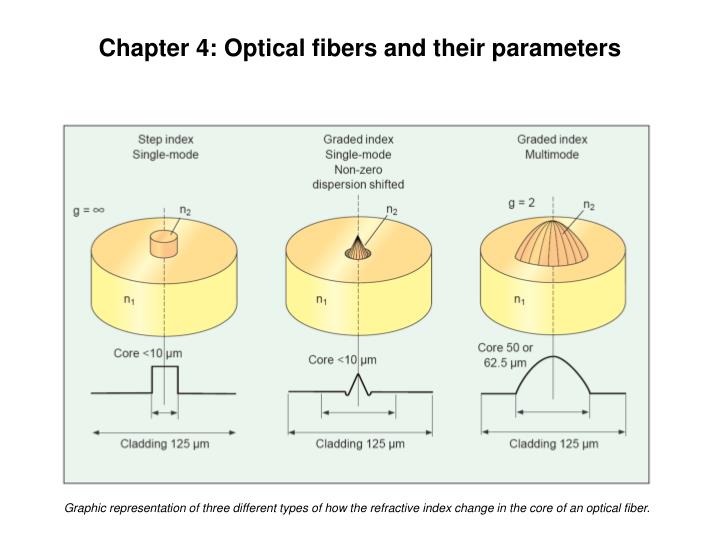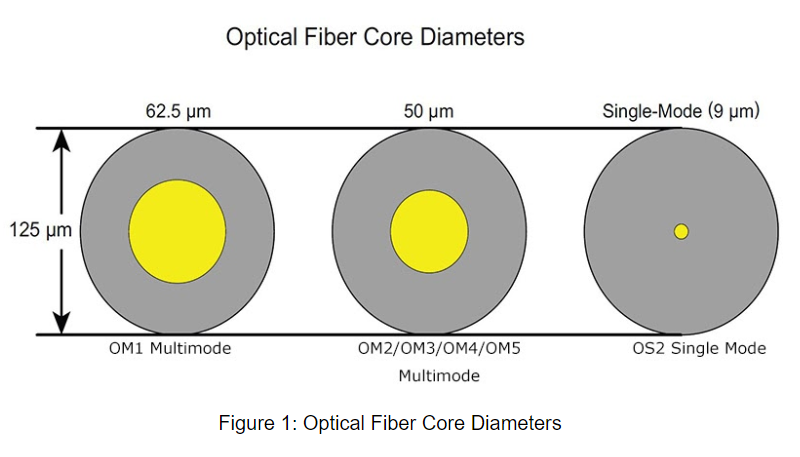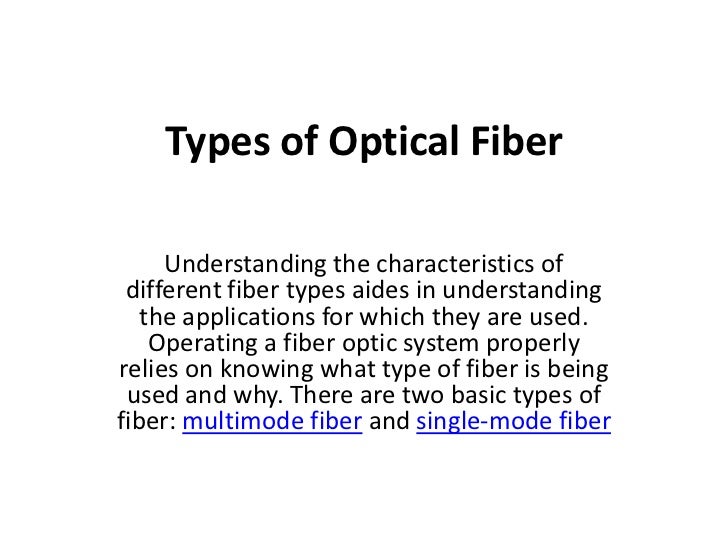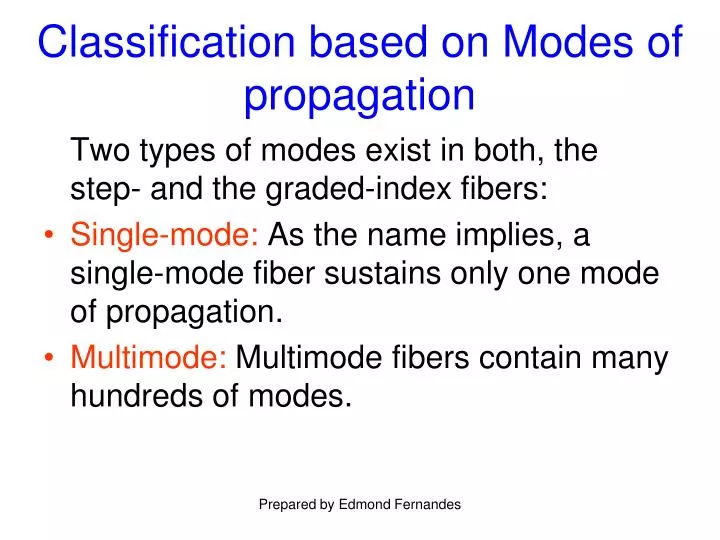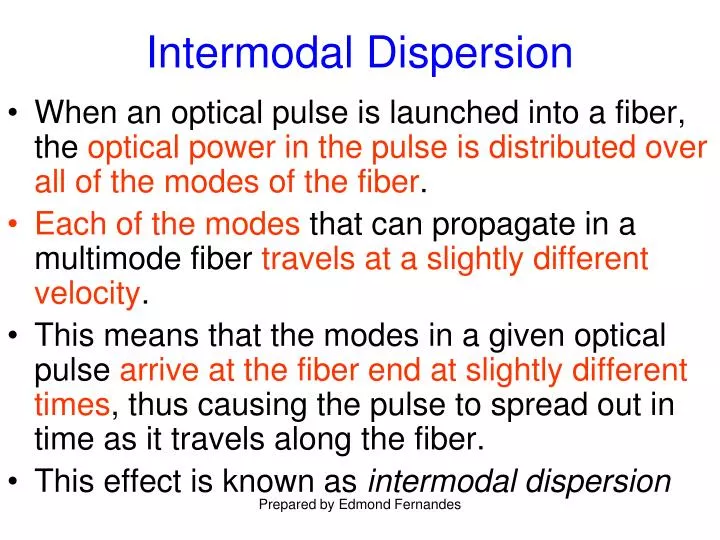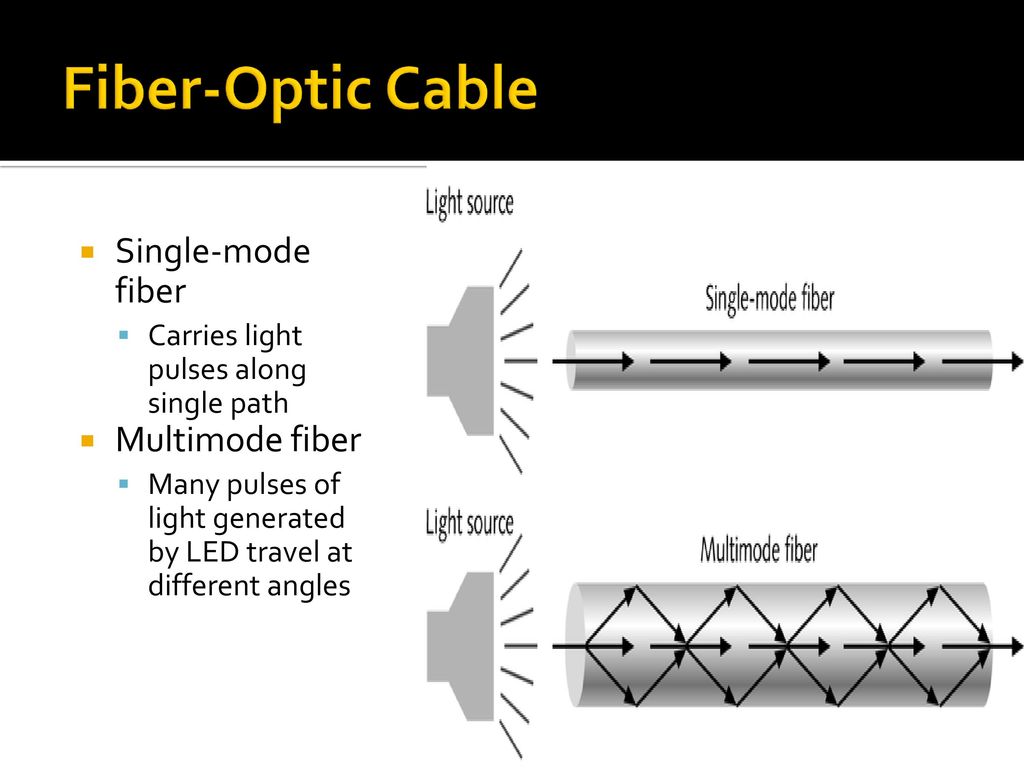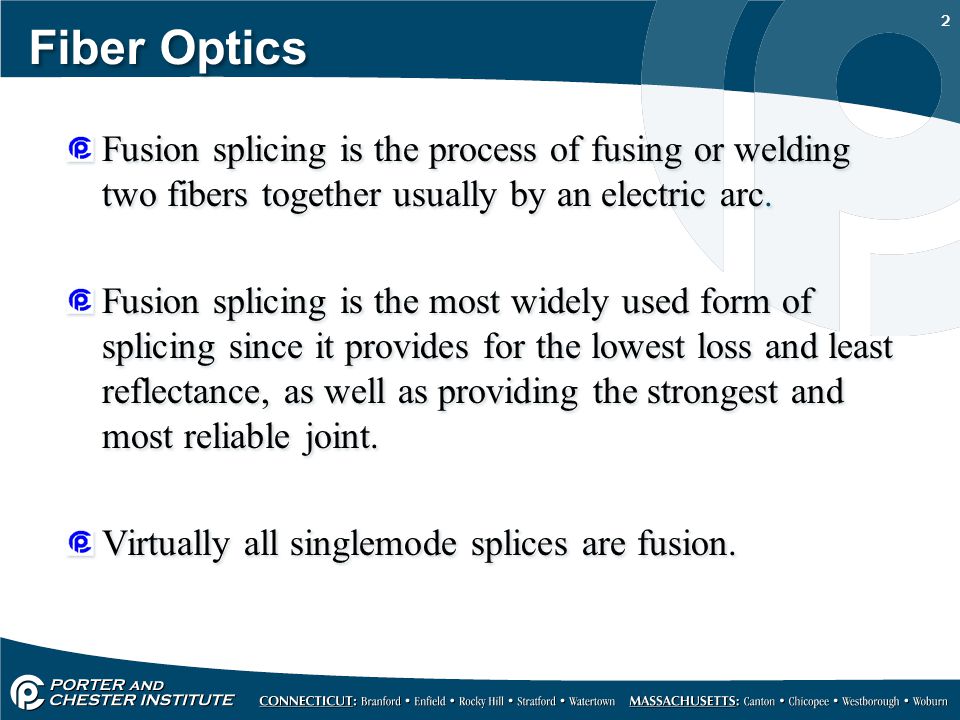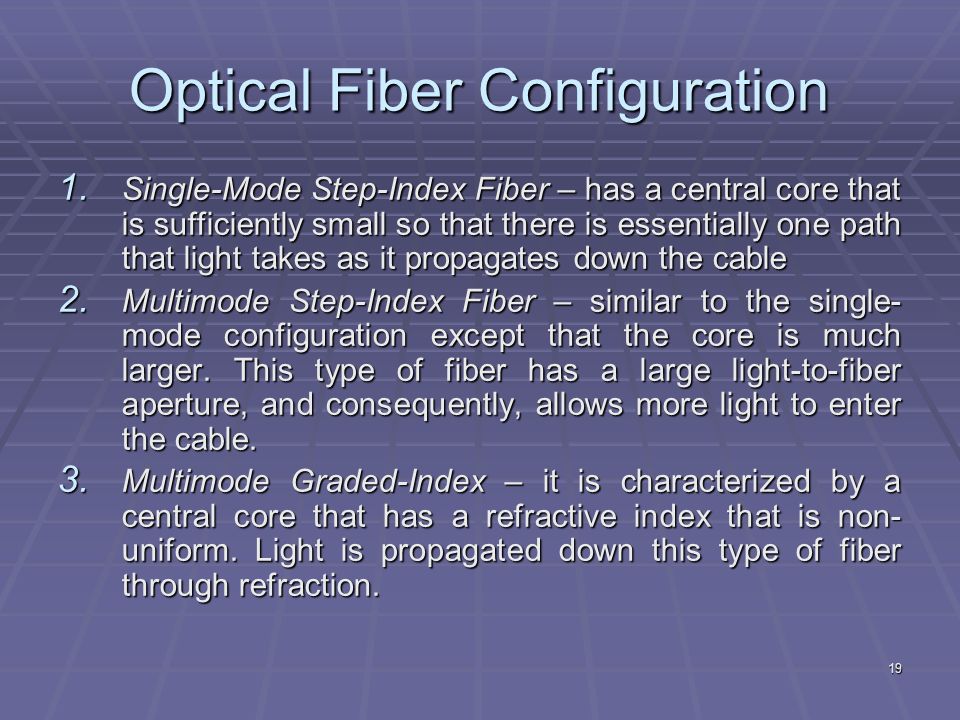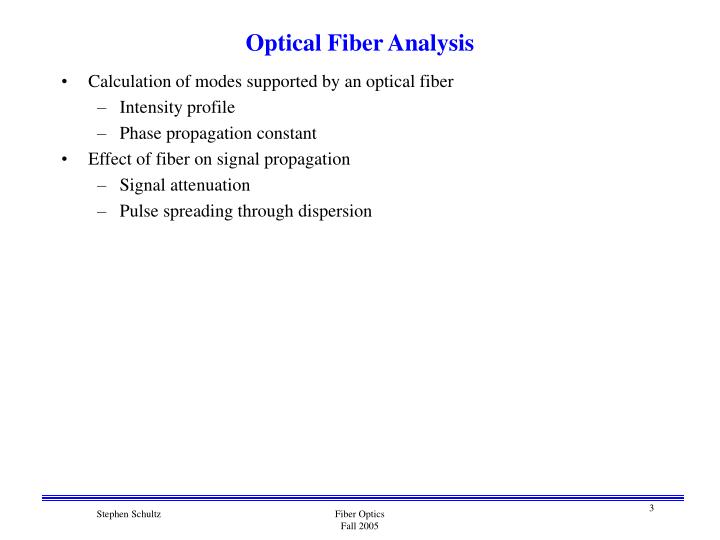In optical fiber technology multimode fiber is optical fiber that is designed to carry multiple light rays or modes concurrently each at a slightly different reflection angle within the optical fiber core.
Single mode and multimode fiber ppt.
Single mode fiber cable due to small diametric core of 8 10 microns diameter allows one mode of light to propagate through it.
This is why you rarely see yellow cables single mode in the same equipment rack or wall box as aqua or orange cables multimode.
Single mode fiber allows less dispersion whereas multi mode fiber allows more dispersion.
And the light propagation reduces less in the single mode fibers transmission than that of multimode fibers.
The transponders with multimode and single mode sfps can cost 50 less than buying proprietary single mode sfps and installing them in the switches.
The main difference between single mode and multimode optical fiber is the size of the core.
Single mode fiber core diameter is much smaller than multimode fiber.
Multimode fiber transmission is used for relatively short distances because the modes tend to disperse over longer lengths.
And multimode fiber core diameter is 50 µm and 62 5 µm typically which enables it to have higher light gathering ability and simplify connections.
Transponders are used to convert the 850nm multimode to 1310nm single mode fiber.
Dimensions of single mode multimode fiber.
Single mode fiber has lower bandwidth whereas multi mode fiber has higher bandwidth.
Om1 has been the most popular multimode fiber choice throughout the 80 s 90 s and into the early 2000 s and was the most common multimode fiber used and yet it has the lowest data carrying capacity and shortest distance limitations as compared with other multimode fiber types.
Multimode fiber cable due to large diametric core of about 62 5 microns diameter allows multiple simultaneous mode of light to propagate through it.
Single mode fiber has less attenuation whereas multi mode fiber has more attenuation.
Because multimode fiber is thicker it can accommodate more signals for greater bandwidth.
Single mode fiber has a core that measures around 5um while the multimode fiber core measures 50um or more.
Its typical core diameter is 9 µm even if there are others available.
The issue is single mode os1 and os2 fiber cannot be passively spliced or coupled to multimode om1 om2 om3 and om4 fiber.
Multimode fiber has two types of light propagation step index and graded index while single mode fiber has only one step index.
The 62 5 125 µm aka.
Here let s look at multimode and single mode fibers from the perspective of light rays travelling down the fiber.
The issue is the fiber s diametral core size or the size of the optical glass core.





